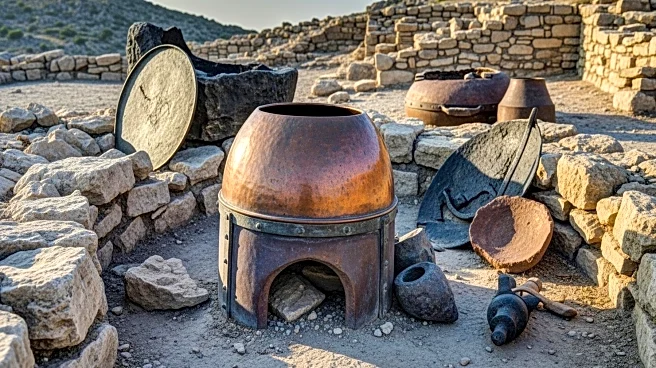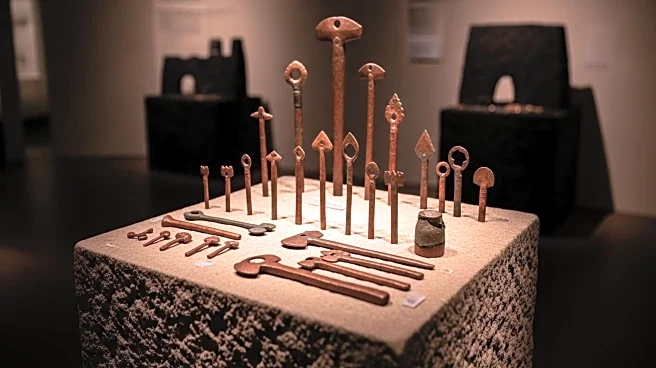What's Happening?
Recent research conducted by Cranfield University has uncovered significant insights into the origins of iron production through the study of a 3,000-year-old copper smelting site in southern Georgia. The site, known as Kvemo Bolnisi, was initially thought to be an early iron smelting location due to the presence of hematite, an iron oxide mineral. However, new findings indicate that the site was used for copper smelting, with iron oxide serving as a flux to enhance copper yield. This discovery supports the theory that ancient copper metalworkers played a crucial role in the invention of iron by experimenting with iron-bearing materials. The study, published in the Journal of Archaeological Science, highlights the transition from the Bronze Age to the Iron Age, marking a pivotal technological advancement in human history.
Why It's Important?
The findings from Kvemo Bolnisi provide valuable evidence of the experimental processes that led to the development of iron metallurgy, a cornerstone of industrial advancement. Understanding the origins of iron production is crucial as it laid the foundation for the widespread use of iron, which transformed societies by enabling the creation of tools, weapons, and infrastructure. The ability to extract and utilize iron from ore marked a significant shift in technological capabilities, influencing military power, economic growth, and architectural development. This research not only sheds light on historical technological progress but also underscores the importance of interdisciplinary studies in uncovering the complexities of ancient innovations.
What's Next?
Further research is likely to focus on exploring other ancient smelting sites to gather more evidence on the transition from copper to iron metallurgy. Archaeologists and scientists may employ advanced techniques such as scanning electron microscopy to analyze metallurgical remains, providing deeper insights into ancient metalworking practices. Additionally, this study may prompt a reevaluation of other historical sites previously misidentified, potentially leading to new discoveries about early technological advancements. Collaboration between archaeologists, geologists, and materials scientists will be essential in continuing to unravel the history of iron production and its impact on human civilization.
Beyond the Headlines
The study of Kvemo Bolnisi not only contributes to historical knowledge but also highlights the role of experimentation and innovation in technological progress. The use of iron oxide as a flux by ancient copper smelters reflects a sophisticated understanding of material properties and the willingness to explore new methods. This research exemplifies how modern scientific techniques can be applied to archaeological findings, offering a glimpse into the minds of ancient innovators. The implications extend beyond historical interest, as they provide a framework for understanding the evolution of technology and its influence on societal development.











